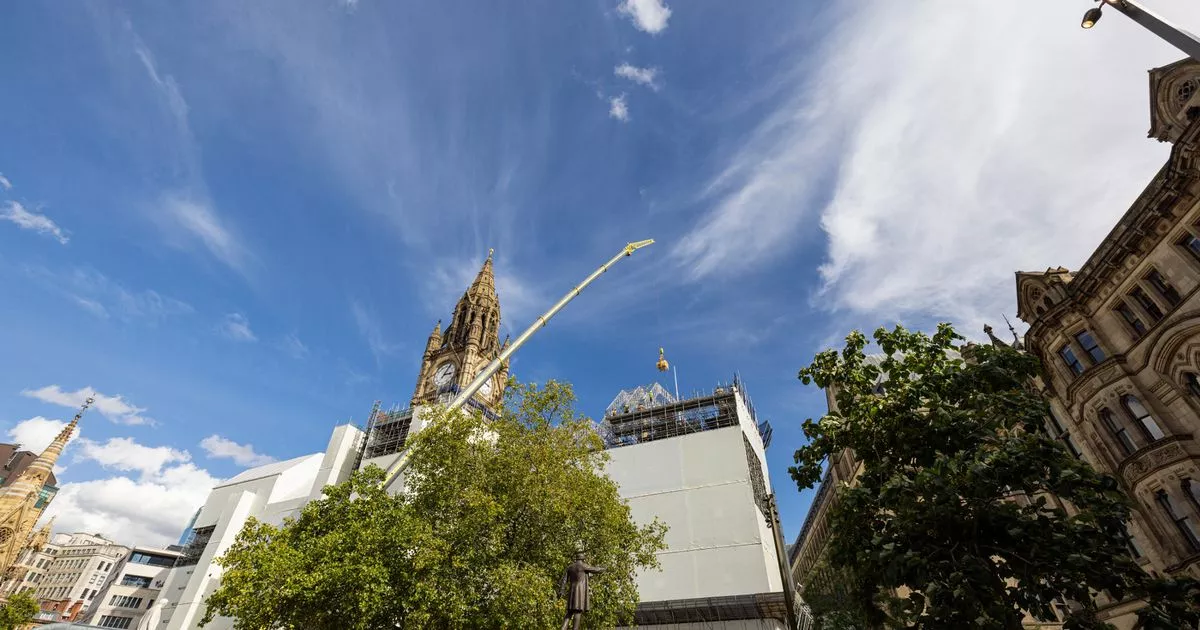High above Albert Square, a painstaking operation is underway as Manchester Town Hall comes back into view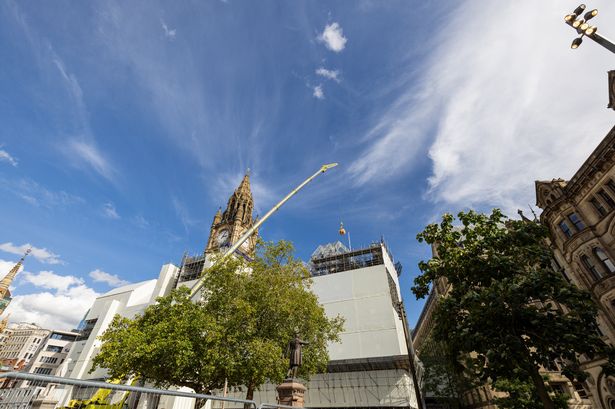 Manchester Town Hall(Image: Kenny Brown | Manchester Evening News)
Manchester Town Hall(Image: Kenny Brown | Manchester Evening News)
Behind the hoardings closing off part of Albert Square in Manchester city centre, high in the air, the scaffold shroud hiding and protecting the roof of Manchester’s new-look town hall is slowly being removed.
The operation to take down the temporary structure, which is set to last months, has been described by the council as ‘painstaking, complicated and challenging’.
But it will be well worth it, as a much-missed focal point of the city centre’s skyline comes back into view after more than three years hidden away under metal bars and specialist covering.
Stay connected with our City Life newsletter here
The Manchester Evening News, with full PPE, was given exclusive access to the site to delve deeper into exactly what is going on in what’s been described as a major milestone in the multi-million pound renovation of the Grade I-listed building, which dates back to 1877.
An enormous temporary canopy supported by scaffold has keep the famous building watertight while work to restore, repair and strengthen the town hall’s Victorian-era roof has been taking place. As such, it’s been under wraps since the spring of 2022.
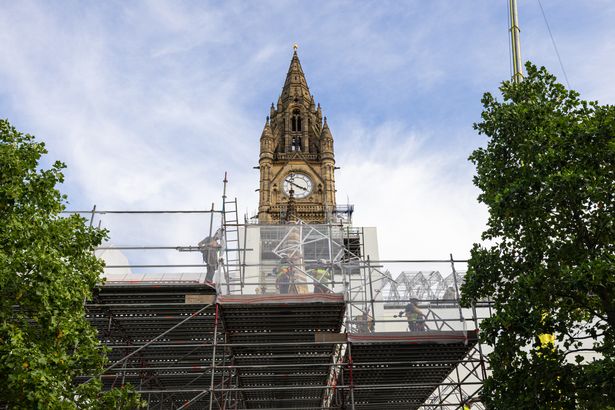 The project is expected to last for months(Image: Kenny Brown | Manchester Evening News)
The project is expected to last for months(Image: Kenny Brown | Manchester Evening News)
Now though, with the help of a crane capable of lifting 300 tonnes, the metal structures and canopy are being carefully hoisted down, with shoppers, visitors to the city and Mancunians going about their daily lives watching on from afar.
More than 300 workers are involved in the project and each section of scaffold and white canopy takes as long as 15 minutes to bring down.
It’s expected to take months to completely strip the whole building, but the council said it was hopeful to complete one side in time for the Christmas markets in December.
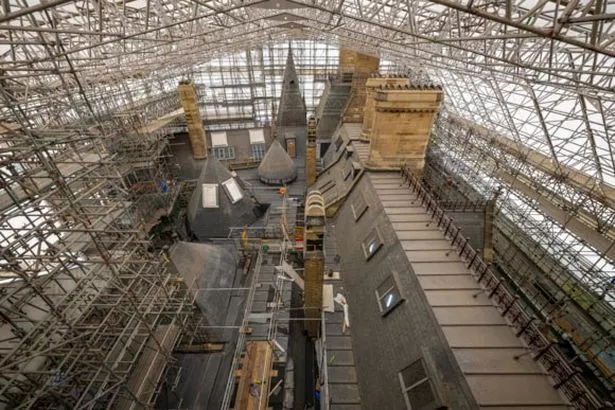 Looking up towards the roof inside the town hall(Image: MCC)
Looking up towards the roof inside the town hall(Image: MCC)
The crane lifts a device known as a ‘robo rigger’ – a piece of equipment that helps stabilise and control the load against the wind – on top of the roof.
Scaffolders already up on the roof then attach the crane to a truss, part of the structure covering the roof.
Once free, the truss is lifted and swung around where it’s placed on a landing platform ready to be stripped down then hoisted away.
High winds, however, can delay the operation due to health and safety considerations.
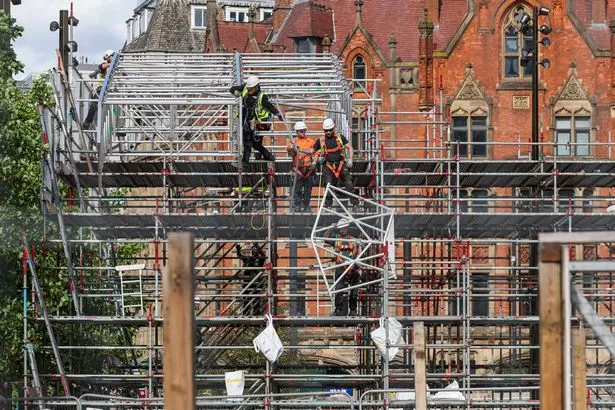 Workers on the roof(Image: Kenny Brown | Manchester Evening News)
Workers on the roof(Image: Kenny Brown | Manchester Evening News)
Since the spring of 2022, the council has revealed more than 100,000 roof slates have been replaced using slate from the same Cumbrian quarry as the 1870s originals. Each one has been spilt and trimmed by hand, with traditional detailing carefully copied.
The town hall’s 37 enormous chimney stacks have been repaired, with damaged sections replaced and reconstructed using sandstone which matches the original in type and carved detail. Capping stones had to be individually lifted by crane.
Some of them can now be seen as work to bring the temporary roof down progresses.
Tonnes of original cast iron decorative work – known as brattishing – has been removed, repaired and repainted in burgundy red, the colour favoured by architect Alfred Waterhouse, who designed the town hall.
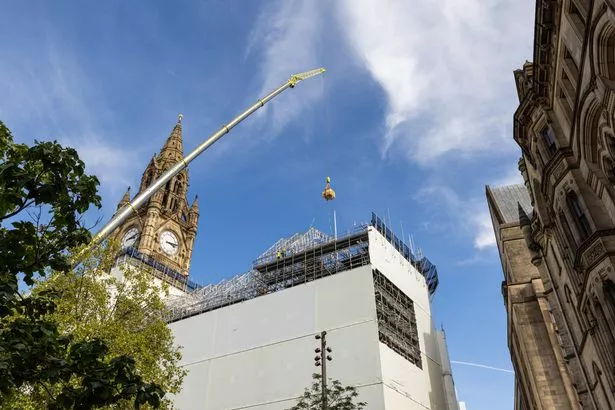 The crane at work(Image: Kenny Brown | Manchester Evening News)
The crane at work(Image: Kenny Brown | Manchester Evening News)
Guttering has been carefully redesigned and made larger and cast iron pipes have been repaired. A new LED lighting system has also been installed to highlight decorative gothic architectural features and around 1,200 wooden and metal-framed windows have been restored, retaining original glass where possible or using matching handblown glass.
Statues, meanwhile, have been repaired and fixed. The restoration project is said to be some £76m over budget.
The town hall closed in January 2018 for the project, which is valued at £430m, to begin.
Deputy leader of the council, councillor Garry Bridges, said: “Manchester is getting this beloved landmark back, in magnificent shape. Our once-in-a-century project to repair and restore the town hall is safeguarding it for future generations.
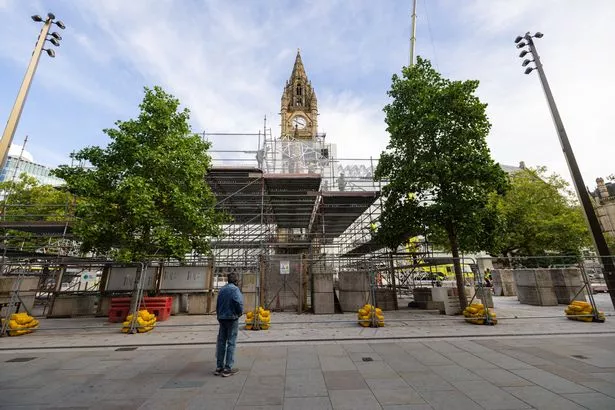 Manchester Town Hall(Image: Kenny Brown | Manchester Evening News)
Manchester Town Hall(Image: Kenny Brown | Manchester Evening News)
“It is painstaking, complicated and challenging work, but it’s a nationally important heritage building and there are no short cuts.
Join our Manc Life WhatsApp group HERE
“We’re looking forward to reaching the point where we can welcome people inside again, with greater opportunities to experience its architecture and artefacts. In the meantime, it’s great that people can see more of the progress which is being made.”
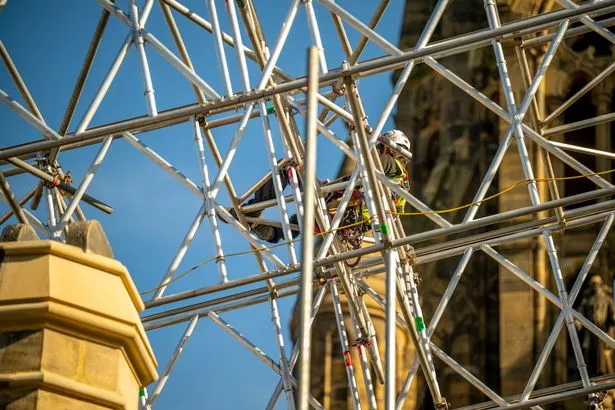 Work on the roof(Image: Manchester city council)
Work on the roof(Image: Manchester city council)
The project follows the unveiling in September last year of the town hall’s iconic clock tower.
The 85m (280ft) tower had also been shrouded in scaffolding as the clock face was restored from summer 2021, when 140 years of Mancunian grime and rain were meticulously cleaned off.
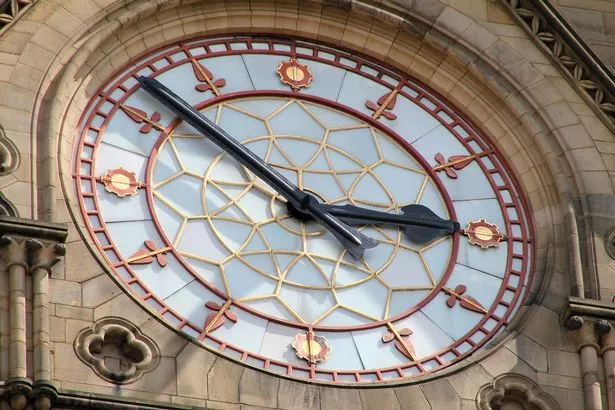 The town hall clock face(Image: Aidan o’rourke, freelance)
The town hall clock face(Image: Aidan o’rourke, freelance)
Preservation work took place on the cast iron dials, glass panels and eight-tonne bell – officially called Great Abel. They were all made to look like new, as was the 23-carat gold hour markers. The clock, made by master clockmakers Gillet and Bland, is the largest of its design ever made and remains one of the country’s biggest and most significant tower clocks.
The newly-revealed section of the town hall’s roof will likely be coated in several years’ worth of accumulated dust.
The council, however, said it was confident Manchester’s rain would wash that away over time.
The town hall was built in the late 19th century, replacing another building which served as the city’s civic centre on King Street. It was designed by Waterhouse in the 13th-century Gothic style and completed in 1877 at around £1m.
